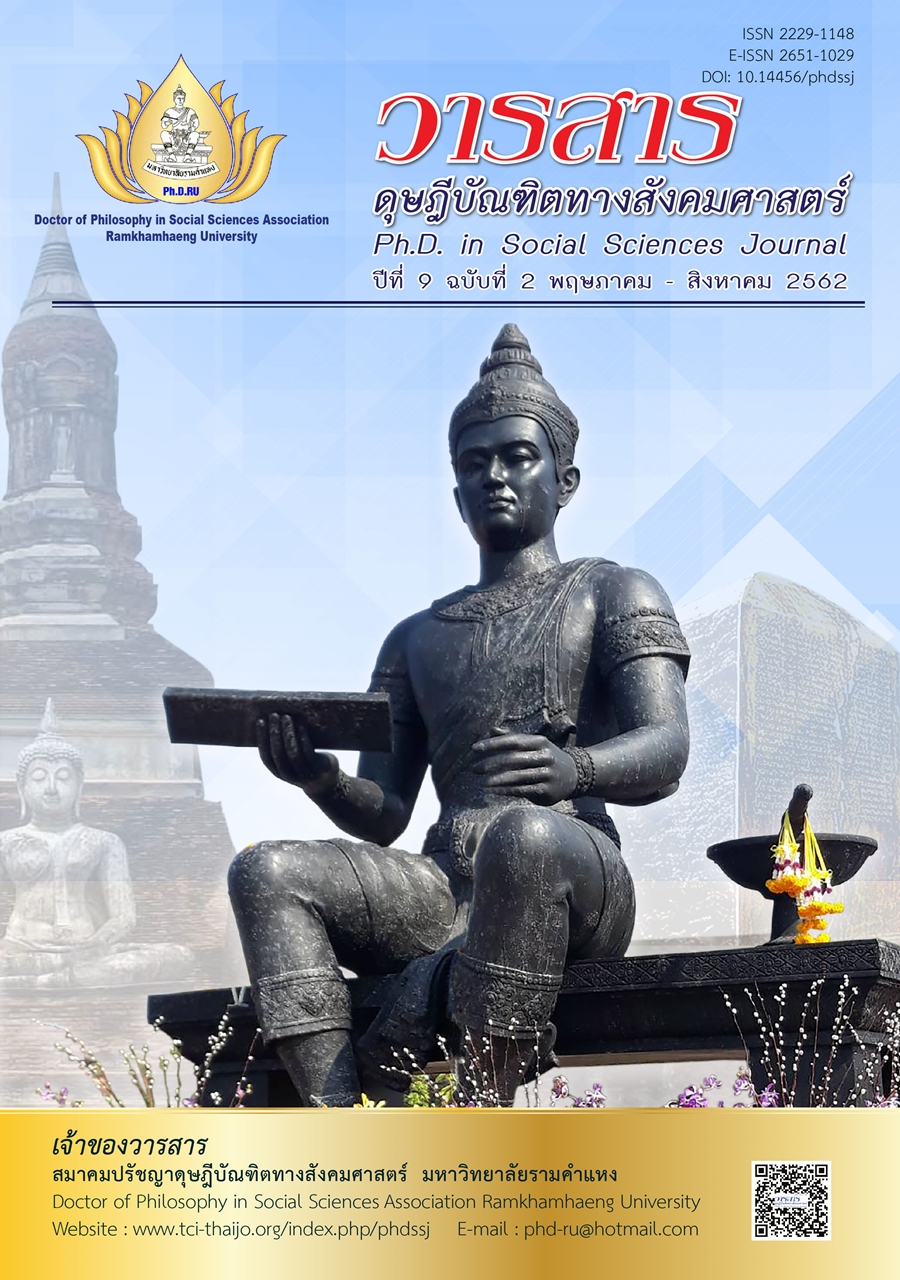Utilization of Durian Shell and Mangosteen Shell as Fuel Briquette and Fertilizer: A Case Study of Kaeng Hang Maeo District, Chanthaburi Province
Main Article Content
Abstract
The purposes of this study were to study the situations, the demand and the feasibility to utilize durian and mangosteen shells and to recommend guidelines to promote the production of fuel briquettes and fertilizers for farmers. Research is the mixed method using the semi-structured interview. The purposively sampling was used with three government officials and the accidental sampling with 200 farmers and entrepreneurs of community enterprises. The results are analyzed by using the descriptive method namely, the Triple Bottom Line was used in three dimensions: economic, social and environmental dimensions.
The study finding revealed that for the farmers, the main utilization of durian and mangosteen shells was for fertilizers and medicine, moreover they use them as fuel briquettes replacing charcoal briquettes. The return on investment by the payback period to produce fuel briquettes by using the Triple Bottom Line is 46 days. Guidelines to promote the utilization of durian and mangosteen shells as fuel briquettes consisted of three dimensions (1) for the economic dimension, the fuel briquettes was used instead of the purchasing the household fuel and produced for commercial purposes was an opportunity to generate income for the households and the community (2) for the social dimension, it promoted the development of people and society in the community by involving the local farmers and providing employment and (3) for the environmental dimension, fruit shell waste was eliminated by changing the form of biomass with heat and reduced the use LPG in households. With one LPG tank (15 kg), it could be replaced by using fuel briquettes produced from 47.10 kg of durian shells and 39.75 kg. of mangosteen shells, respectively.
Article Details
Academic articles, research articles, and book reviews in the Ph.D. in Social Sciences Journal are author’s opinions, and not the publisher’s, and is not the responsibility of the Ph.D. in Social Sciences Journal Philosophy Association, Ramkhamhaeng University. (In the case that research is done on human, the researcher has to be trained in Ethics for Doing Research on Human Training and has to produce the evidence of the training).
References
Department of Alternative Energy Development and Efficiency. (2015). Alternative Energy Development Plan: AEDP 2015. Bangkok: Ministry of Energy. [In Thai]
Phoochinda, W. (2012). Environmental research methodology and statistics (2nd ed.) Bangkok: Bangkok Block. [In Thai]
Sawangpanyangkura, T., Manochai, P., Chitov, T., & Nitatwichit. (2012). Composting of industrial ripen mango peel waste. Chiang Mai. Maejo University. [In Thai]
Tantisattayakul, T., Phongkasem, S., Phooyar, P., & Taibangury, P. (2015). Community-based renewable energy from biomass briquettes fuel from coconut leaf. Journal of Science and Technology, 23, 418-431. [In Thai]
The Stock Exchange of Thailand. (n.d.). Triple Bottom Line or TBL. Retrieved from https://www.set.or.th/sustainable_dev/th/st/knowledge/principles_p1.html?printable=true [In Thai]
Tippayawong, N. (2010). Biomass conversion technology. Bangkok: Technology Promotion Association. [In Thai]
Ussawarujikulchaia, A., Semsayun, C., Prapakdee, N., Pieamsuwansiri, N., & Chuchat, N. (2011). Utilization of durian and mangosteen peels as briquette fuel. Bangkok: Faculty of Environment and Resource Studies. Mahidol University. [In Thai]


